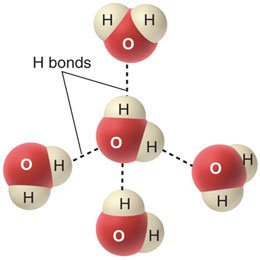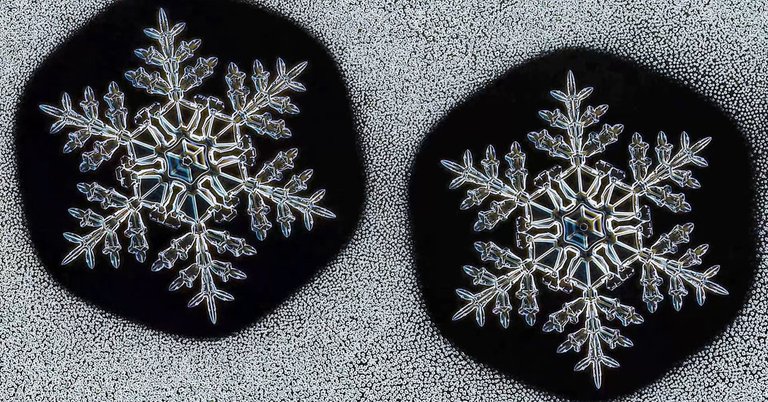Did you Know "the largest snowflake in the world was 15 inches wide and 8 inches thick ".
Hey everyone. Welcome to the next episode of curiosity. Ever thought of how the snowflakes are formed or are there any identical snowflakes? Well lets find out.

If you are ever enjoying snowfall with your friends and family, why not catch a few snowflakes and observe them. You might notice that they are symmetrical and have 6 sides. Now of-course snowflake is the frozen water but it is very different from a ice cube. Unlike ice cube formed by freezing of liquid into a solid , snowflake is formed when water vapor directly freezes into ice.
But First, How is a Snowflake Formed?
To understand that we need to understand the different properties of water. Almost everyone know the composition of water. It's made from two hydrogen atom and one oxygen atom. Therefore a single water molecule has 10 electrons and 10 protons , 8 from oxygen and 1 from each hydrogen atom. The two electrons of oxygen atoms are shared with each electrons of both hydrogen atoms forming a covalent bond. The remaining 4 electron in the outer shell form pairs. All the electrons are negatively charged. Similar charger repel so they tend to stay as far as possible from each other. So the two hydrogen atom attached get pushed a little further making the angle of 104.5 degrees.

The oxygen molecule is slightly negative and water hydrogen molecule is slightly positive. Due to this property the oxygen in one molecule is attracted to the hydrogen in another molecule which forms a weak bond between them called a hydrogen bond. When the water freezes these bonding forms repeatedly forming a hexagonal structure because of the angle of hydrogen and oxygen atom in each molecule. This is the basic structure of a slow flake and retains the hexagonal structure as it grows.

As the snowflake moves through the atmosphere other water molecules starts sticking to the basic hexagonal shape and expand outward bit by bit. Now of-course the shape of the snowflake depends on different atmospheric conditions like humidity and temperature. As the snowflake falls changes in conditions affects how it grows.

But, Can we find Any Identical Snowflakes?
We all have heard of a saying "that Like people , no two snowflakes are exactly alike". But how much of that is true. It one of the natures great mysteries. As explained above hexagon is the basic shape and then water molecules starts forming bond with each other forming a bigger hexagon, this is why a snowflake has always 6 sides not 4 , not 5. The variety of snowflakes just explodes. The shapes are practically infinite.
Well in lab scientist have already created two identical snowflakes. His name is Ken Libbrecht. Inside a chamber he started with humid air and dropped the temperature until the crystals start to form. When the humidity was boosted arm begin to extend out from the corners and branches shoot off the arm. All the snow flakes grow in exactly the same condition and they are perfectly identical. But these only exists in lab.

Fig: Identical Snowflake Created in Lab
In real life, the condition is unpredictable. The temperature , humidity and pressure are constantly changing. Each snowflake have a different path as it falls to earth which means they all grow a little bit differently.
So infact Each one of them really is unique shaped by their different paths to Earth.
So thats it for this episode guys, Hope you all liked it. If you did please upvote, comment and resteem.

Stay Curious.
Other Works By me:
Very interesting post.
Learn something new every day!